2012-07-16
Another Green Grand Prix Victory!
EVXteam.org, by Ann Cohen
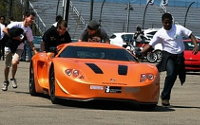
The EVX Team had an incredibly busy spring. In April we returned to Watkins Glen to compete in the Green Grand Prix.
Watkins Glen is a beautiful and historic NASCAR track in the Finger Lakes region of New York. The first day we were on the track where we achieved 98 MPG against an eclectic group of alternative fuel vehicles. It was great to see the wide variety of cars, trucks and motorcycles on the track. It was a glorious, sunny day.
The next day was the 105 mile road rally that circled Lake Seneca. We had to navigate the race in rain and fog. In spite of the awful driving conditions and traffic on the course, the GT logged an astounding 92.5 mpg – – amazing and good enough for us to win our class!
The next week we were exhibitors at the USA Science and Engineering Festival in Washington, DC. The Festival was a huge event attended by several hundred thousand people. It felt as if we talked to all of them about our cars and our school. We were the guests of the Conrad Foundation and Lockheed Martin for the Festival. Philadelphia Congressman Chaka Fattah surprised us by stopping by our exhibit. It was a great treat for students and staff.
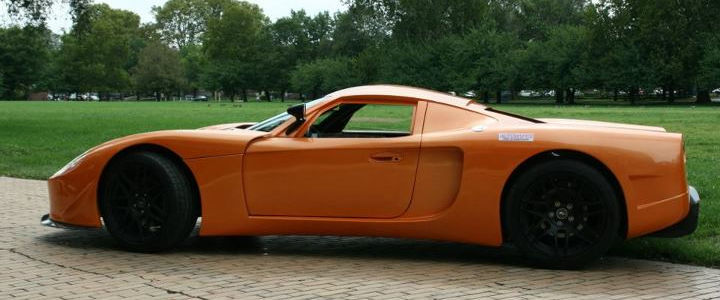
West Philly Hybrid X Team Wins Green Grand Prix Again in 2012
“Watkins Glen is a beautiful and historic NASCAR track in the Finger Lakes region of New York. The first day we were on the track where we achieved 98 MPG against an eclectic group of alternative fuel vehicles. It was great to see the wide variety of cars, trucks and motorcycles on the track. It was a glorious, sunny day.
“The next day was the 105 mile road rally that circled Lake Seneca. We had to navigate the race in rain and fog. In spite of the awful driving conditions and traffic on the course, the GT logged an astounding 92.5 mpg – – amazing and good enough for us to win our class!
“The next week we were exhibitors at the USA Science and Engineering Festival in Washington, DC. The Festival was a huge event attended by several hundred thousand people. It felt as if we talked to all of them about our cars and our school. We were the guests of the Conrad Foundation and Lockheed Martin for the Festival. Philadelphia Congressman Chaka Fattah surprised us by stopping by our exhibit. It was a great treat for students and staff.”
See www.facebook.com/WestPhillyHybridXTeam
and www.evxteam.org
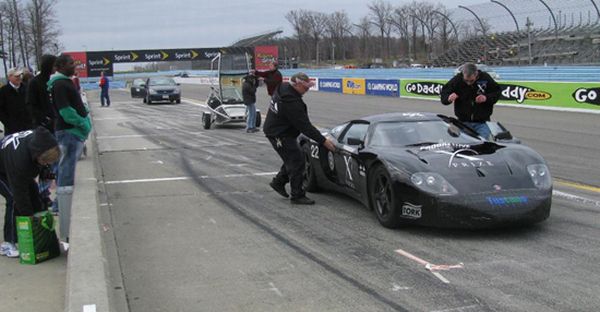
Factory Five’s Facebook page, 2011
(Copied and pasted from Facebook for those without)
You may remember Simon Hauger and his team of high school kids from West Philly High School from last year’s Progressive Insurance X-Prize Competition where they were one of only twenty-two finalists. The car didn’t win the X-Prize, but Simon and his crew didn’t give up.
At last month’s Green Grand Prix, the team ended on the podium beating all entries, even the much-promoted Chevy Volt. The Factory Five GTM averaged over 100 miles per gallon!
Watkins Glen International Speedway kicked off its opening weekend of festivities Friday with the Green Grand Prix. Now in its sixth year, the Green Grand Prix is a competition billed as the only road rally for alternate-fuel vehicles in the United States sponsored by the Sports Car Club of America.
The event drew 45 competitors – from the Chevy Volt and GM’s fuel cell powered SUV to homemade three-wheelers powered by industrial lawnmower engines and everything in between. The competitors were as interesting as their cars. Four teams from the Automotive X Prize showed up, including West Philadelphia High School and Cornell University.
The West Philly Team brought their highly tuned Factory Five GTM powered by a Volkswagen TDI engine running on 100% biodiesel.
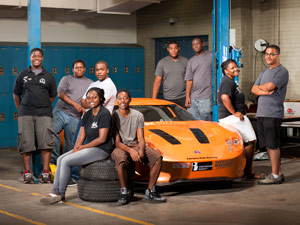
“For the past month we worked to get the GTM ready for this competition. In the haste of the X Prize, we had cut lots of corners. We discovered why the car had not achieved the fuel economy we needed for the X Prize and fixed it. Our car is running better than it ever has … just in time for the race,” – Stefon Gonzales, the team’s co-captain explained.
After two hours of racing, the results were tabulated. The Chevy Volt won the 50-mile race and West Philly had won the 100 mile. Simon Hauger, the team’s director, was elated. “We did really well in the X Prize but we didn’t win. It feels great to be in the winner’s circle next to the Chevy Volt today. I think we have a compelling car – it’s sexy, it’s fast, and we just got over 100 miles per gallon on a world famous track. Not bad for a high school.”
The custom TDI-powered GTM has been part of a development program for the last two years where we are looking seriously at high mileage, eco-friendly applications in Factory Five cars. In 2008, we built the battery-electric ’33 Hot Rod with SolidWorks and Hewlett Packard. We’ve also looked carefully at hybrid drive and one customer went so far as to built a turbine powered BEV GTM. Click here to read about some of these cars.
This GTM built by West Philly High School has direct applications to Factory Five products and you should see a variant of this technology in the near future.
The car will be at the 2011 Factory Five Open House.
160 mpg
Christopher DeMorro – Jul 14 2011
A group of high school students, using a kit car body designed for high performance, managed to win the Green Grand Prix rally back in April by getting 160 mpg using an old VW engine running on biodiesel and a home-built hybrid system.
The West Philly Hybrid X team is made up of teachers and students, and the team is sponsored by U.S.-based International Battery. West Philly faced off against some stiff competition from big names like the Chevy Volt and Tesla Roadster, but their unique vehicle won the day. Using a GTM kit car body from Factory Five Racing, which borrows many parts from the Chevrolet Corvette chassis, the West Philly team forwent big-block horsepower in favor of the small and efficient 1.9 liter Volkswagen diesel engine. Found in VW’s from the late 90’s and early 2000’s, these engines are quite capable of getting 50+ mpg when driven lightly, and can be made to run on biodiesel to boot.
With the 1.9 liter diesel mid-mounted in the GTM, the team next mocked up a home-built hybrid system, using International Battery’s lithium-ion battery cells, broken up into four packs distributed across the car and providing 180 volts of power. The West Philly team managed to achieve about 160 mpg over 100 miles of continuous driving, better than the 90 other teams that entered. The next-closest result was only 106 mpg.
I love this approach to fuel efficiency. The GTM kit car is the perfect choice, being aerodynamic and lightweight. The 1.9 liter VW engine is a stroke of genius as well, and it isn’t a slouch, especially in the lightweight GTM body. Reportedly, the car is also pretty damn quick when the throttle is mashed, and I believe it. Hopefully this group of kids go on to bigger and better things. Not too shabby for some teenagers, eh?
By Ronnie Polaneczky
Philadelphia Daily News, September 21, 2010
“How are they doing?” a worried caller recently asked me. She’d read my column describing how the team had been eliminated, and she’d been worrying about them ever since.
Having spent a day with the team in Washington, D.C., last Thursday, I’d say they’re doing fabulously.
The winner of the contest wants their help with a new project.
President Obama himself praised them as a stellar example of success, during a White House announcement last week about his new plan to strengthen science, technology, engineering and math education.
What started as 111 entrants (competing for $10 million in prize money) dwindled to 21 before West Philly Hybrid X was eliminated. But the team’s doggedness and creativity had so moved contest organizers that the students were asked to attend last week’s awards ceremony in D.C. – and to bring their cars so attendees could see what the Little Team That (Almost) Could had been able to accomplish.
Afterward, a handful of the students were invited to the White House, where Obama praised their after-school program as one that “challenged them to solve problems and to work together, to learn and build and create.”
They’ll be doing just that come winter, when the grand winner of the Progressive Automotive X Prize, Oliver Kuttner, will let the team build an alternative, electric motor for the car whose internal-combustion engine helped him snag the big prize.
So, even though West Philly Hybrid X didn’t roll away a winner, it represented the competition – proudly.
2 Footnotes:
1.) CEO of Edison2, the team that won the mainstream edition of the X PRIZE with its Very Light Car, announced at the awards reception that he was donating a Very Light Car chassis to West Philly.2.) We got an official 65.1 MPGe from the X PRIZE. When we pulled the data card from the Focus, we found that we had achieved 78.2 MPGe. We think the X PRIZE should post our actual MPGe and acknowledge our communications and telemetry problems [as they did for the Aptera team]. For the benefit of all the X PRIZE fans, I think they need to post the picture of our telemetry problem, as well.
Wednesday, 28 April 2010 11:05
We Passed!
After two intense days in the shop at the Michigan International Speedway, both the EVX Focus and GT have passed the Technical and Safety inspections and will be participating in on-track dynamic testing this afternoon.
The car will run 60 miles on a charge of electricity, and can be charged overnight. So why are we waiting 2 years for a Chevy Volt that gets 40 miles on a charge? These kids did that in 2004. … And the 100 mph car they are building now is one “even school teachers can afford,” between 20-$25,000. – ScienceFriday.com, by Ira Flatow on Tuesday, February 3. 2009
[“These kids” should be put in charge of Detroit!]
Hybrid-Electric H.S. Project Wows Crowd At Philly Auto Show
updated 4-12-2010
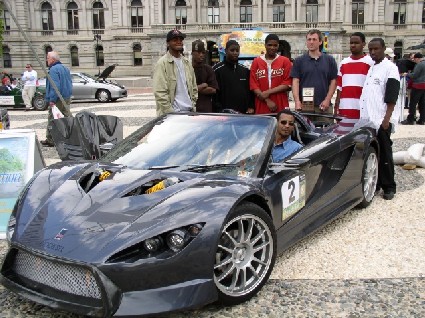
“0 to 60 in 4 sec. and over 50 mpg on soy bean oil”
Popular Mechanics magazine ranked the W. Philly HS team #10 in the 64 competing for the X Prize. [see below]
[tell GM, Ford, Chrysler & Obama!]
CBS News Feb. 17, 2006
(CBS) The star at last week’s Philadelphia Auto Show wasn’t a sports car or an economy car. It was a sports-economy car – one that combines performance and practicality under one hood.
But as CBS News correspondent Steve Hartman reports in this week’s Assignment America, the car that buyers have been waiting decades comes from an unexpected source and runs on soybean bio-diesel fuel to boot.
A 2,000+lb car that can go from zero to 60 in four seconds and get more than 50 miles to the gallon would be enough to pique any driver’s interest. So who do we have to thank for it. Ford? GM? Toyota? No – just Victor, David, Cheeseborough, Bruce, and Kosi, five kids from the auto shop program at West Philadelphia High School.
The five kids, along with a handful of schoolmates, built the soybean-fueled car as an after-school project. It took them more than a year – rummaging for parts, configuring wires and learning as they went. As teacher Simon Hauger notes, these kids weren’t exactly the cream of the academic crop.
“We have a number of high school dropouts,” he says. “We have a number that have been removed for disciplinary reasons and they end up with us.”
 One of the Fab Five, Kosi Harmon, was in a gang at his old school – and he was a terrible student. The car project has changed all that.
One of the Fab Five, Kosi Harmon, was in a gang at his old school – and he was a terrible student. The car project has changed all that.

“I was just getting by with the skin of my teeth, C’s and D’s,” he says. “I came here, and now I’m a straight-A student.”
To Hauger, the soybean-powered car shows what kids – any kids – can do when they get the chance.
“If you give kids that have been stereotyped as not being able to do anything an opportunity to do something great, they’ll step up,” he says.
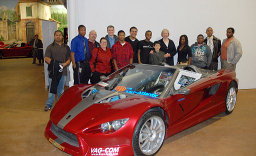 Stepping up is something the big automakers have yet to do. They’re still in the early stages of marketing hybrid cars while playing catch-up to the Bad News Bears of auto shop.
Stepping up is something the big automakers have yet to do. They’re still in the early stages of marketing hybrid cars while playing catch-up to the Bad News Bears of auto shop.
“We made this work,” says Hauger. “We’re not geniuses. So why aren’t they doing it?”
Kosi thinks he knows why. The answer, he says, is the big oil companies.
“They’re making billions upon billions of dollars,” he says. “And when this car sells, that’ll go down – to low billions upon billions.”
The kit car these West Philadelphia High School students used was an “Attack” kit. It adds even more to their accomplishment to note that in the Sept. 2007 issue of “Car and Driver”, (page 120) there is an article all about a guy who is building and selling a “K-1” Attack kit car pre-built with a 220hp gasoline motor which only does 0 to 60 in 7 secs. and he is charging $75,000 for it!
Mike should major in EV
Ann Cohen, manager of the West Philly Hybrid X Team, West Philly High School
Saturday, 03 April 2010Michael Glover is a first-year-team member, and a junior at the West Philadelphia Auto Academy. Ann and I can’t figure him out.
He has a C or D, in pretty much all of his classes, including shop. Recently, Mr. Preiss caught him cutting shop not once, but twice. I guess the shop doesn’t have what the corner store does.
He falls asleep in my class about once a week. . . .
When interim reports went out, Michael was in shock to see such low grades. He couldn’t understand why the majority of his grades were low D’s, and in my case an F.
. . .
Yet, Michael does exceptionally well after 3:04 p.m.He is an amazing football player. He was a great asset to the team this past fall as an offensive linebacker. He did very well in the field and worked very hard in practice. He loves football so much. He cannot wait for the football summer camp in July.
When football season was over, he joined the West Philly Hybrid X Team. He was simply looking for something to do after school. Many of the students on the team fall into this category. They enjoy automotive and working with the teachers and teammates. Most of the students don’t want to go home right after school.
. . .
He thrives on Simon’s lectures on aerodynamics. He loves the science behind the cars and is working very closely with a Penn student volunteer on researching ways to make the cars more aerodynamic. He is the one who found a more aerodynamic windshield that the team is looking to buy for the cars. The same day he left for the corner store during sixth period, he stayed with Edgar (the Penn engineering student) until five o’clock to research a contraption he could build to put on top of the GT to lower wind resistance.When the gear heads on the team stumble over the name of a car part, a specific about the hybrid technology, or the effect of rolling resistance on fuel economy, Michael has the answer. Without fail. Every time it happens – which is frequently – we’re floored. This is why Ron Preiss says Michael should major in EV.
How We Got Our Name
Ann Cohen, manager of the West Philly Hybrid X Team, West Philly High School
I wasn’t there at the very beginning. At the start of it all it was Simon Hauger, math and physics teacher at the West Philadelphia High Auto Academy, and a group of students who entered the science fair. It was 1998. The kids in Simon’s after school program built an electric go-kart. They won the science fair. It was a remarkable achievement. There had never been a science fair winner from West Philadelphia High School, let alone form the Auto Academy.
The after school program grew from building science fair projects to competing in the Tour de Sol, the nation’s oldest and most prestigious alternative fuel vehicle race. The students built an electric car and became the Electric Vehicle, or EV Team. Besides building electric vehicles, they built hybrid and biodiesel vehicles, but the name stuck.
When we entered the X PRIZE, there were many suggestions about what our team name should be including X-Treme Team, X-Dream Team, and many other hokey suggestions. We kept our original team name and added the X: EVX Team. However, we thought the name wasn’t quite descriptive enough, so we gave ourselves an official name, too. We would be the West Philly Hybrid X Team. EVX would be the name of our cars. A little confusing having two names for one team, but it looks good on our logo.
Now, it looks like an extremely good idea since there is another EVX Team in the Progressive Insurance Automotive X PRIZE. You can check out their website and follow them in the competition, too. We hope hope that you take a look at all our competitors and see all the different ways teams are getting to 100 MPGe. Follow their progress and the new technologies. At the end of the summer we hope that they will all follow us across the finish line. We’ll keep you posted.
Class Act by Mary M. Woodsen, American Way
SIMON HAUGER, physics and math teacher and director of the West Philadelphia High School auto program, since its inception in 1998, strides in behind them. “Listen up,” Hauger says. He always begins this way. “Listen up. As a team …” The room begins to quiet. “As a team, we’re getting more and more attention.”
Attention is a mild word for the staggering amount of media interest these kids have attracted — four documentaries, reporters, a possible movie script, a book. “You’ll have plenty of opportunities to talk to the media,” Hauger says. “So it’s absolutely critical, absolutely critical, that you know what our goals are. Now … what are our goals?”
The kids are into this. “To show not all African-American kids are delinquents,” Azeem Hill says. “To show high school kids can solve serious economic and environmental problems,” Jacques Wells says. “To show we can do it!” Justin Carter says.
Laughter ensues; Hauger laughs too. Then, he goes on. “Guys, this is painful. Those aren’t our primary goals. What’s the point of us being in the X Prize?”
“To build a car that gets 100 miles per gallon,” Sekou Kamara says.
To build a car that gets 100 miles per gallon. A car that caps its carbon emissions at 200 grams per mile, roughly half of what today’s cars emit. A car that can burn rubber.
Do all this and write a business plan — the supply chain, the marketing plan, the bucks behind it — detailing your strategy to build 10,000 cars per year by 2014, and you’ve got a shot at the $10 million Progressive Insurance Automotive X Prize.
Dr. D’s Prescription for Education
Ann Cohen, Wednesday, March 3rd 2010Jerry DiLossi – also known as Mr. D., Jerry D. or Dr. D. – has been teaching auto
technology to Philadelphia high school students since Hauger was in kindergarten. He and Ron Preiss deliver our NATEF certified curriculum in the following areas: brakes, electrical/electronic systems, engine performance and suspension & steering. We are the only NATEF certified school in the Philadelphia School District. This is a big deal. NATEF certification is conferred by the Automotive Society of Excellence (ASE) and is not easy to obtain.
There are about 140 students in the Auto Academy. Jerry D. teaches most of them and it is unfortunate that a pretty large percentage of them don’t have much interest in auto technology. After 37 years in the District, Jerry can’t understand why he’s teaching all these kids who don’t give a rat’s ass about cars.
If you ask many of the kids how they got to Auto, they’ll tell you they don’t have a clue. They are telling the truth. Actually, none of us really understand it, but it’s partly because our school, the Academy of Automotive and Mechanical Engineering, is a hybrid. It is not a vocational school. It is not a career technical school. It is not a comprehensive high school. It is a program within a comprehensive high school.
While the Auto Academy is a self-contained operation in a recently renovated building containing academic classrooms, computer labs and auto shops, we are part of West Philadelphia High School (WPHS), a neighborhood comprehensive high school. The main part of WPHS is a hulking structure that was built in 1911 and takes up an entire city block, one street over from the Auto Academy. West has a long and storied history. Many incredibly successful people graduated from West Philly. The Speedboys won more than their fair share of athletic championships.
More recently, however, West Philadelphia High’s reputation has suffered. It is listed as a school that fails to make adequate yearly progress in standardized testing. It remains on the list of persistently dangerous schools, in spite of a dramatically improved school climate under the leadership of Principal Saliyah Cruz. The 1100 students who are enrolled at West Philadelphia High are assigned to a number of different programs, including Auto.
This means, that even if you have no interest in cars, you may get sent to Auto where you spend 2 class periods a day learning about master cylinders and air conditioners. I think about this a lot. Even though I graduated from a Philadelphia High School 40 years ago, I have vivid recollections of what I liked and didn’t like about school.
I can tell you that if I had been put in a cosmetology program or a business program when I was in high school I would have been the most obnoxious and disruptive kid in the class – if I had bothered to come to school. Dr. D. says if anybody had put him in a roofing class he would have flipped out. He hates heights.
The school day is frequently filled with kids telling anyone within earshot what they think about cars, school and anything else that comes to mind. In spite of the frustrations Dr. D. encounters in the classroom, he and Ron Preiss spend hours and hours after school and on the weekends working with the Team – kids who like to work on cars. Beyond that, Dr. D. has become our best recruiter. Sometimes his recruiting methods are a bit unconventional. He’s recruited kids who get in trouble. He’s told them he’d get them kicked out of Auto if they didn’t join the Team. He’s told kids to join the team so they can get their lives together.
The results have been amazing. The kids are incredibly hard working. They come into the shop early. They come to school when it’s closed. They stay late. This success is a testament to Dr. D’s understanding of kids. It is also about what works in education. If you give teachers and students the space to do work that is important and interesting to them, they can achieve great things. It really does work better than sticking kids in classes they hate.
Tuesday, 12 May 2009
EPA administrator Lisa Jackson Visits Team at West Philadelphia Auto Academy
EPA administrator Lisa Jackson was joined by Congressman Chaka Fattah, Philadelphia Academies, Inc., President Lisa Nutter, West Philadelphia High Principal Saliyah Cruz and many other distinguished guests. Ms. Jackson noted that the auto industry was in a little trouble and gave a real shout out to the Team, telling us that we are the key to the future of the automotive industry.
Team members Eric Yates, Azeem Hill, Jacques Wells and Anita Davidson all took to the podium to explain the work the Team is doing on their two Progressive Automotive X Prize entries and how they intend to use their cars to grow the new green economy. Team Director Simon Hauger thanked Ms. Jackson for the leadership she is providing the country on environmental issues.
West Philly Hybrid X Team at EPA National Vehicle and Fuel Emissions Lab.
Sunday, 13 September 2009
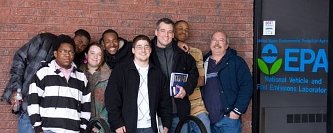
This April members of our Team traveled to Ann Arbor, Michigan where we toured the National Vehicle and Fuel Emissions Lab. We saw the latest in hydraulic hybrid technology and learned about the EPA’s Smart Way Program that encourages businesses and individuals to use the greenest ways to transport themselves and goods. We also learned how the EPA establishes fuel economy and evaluates vehicle emissions, both important to the Hybrid X Team as we build our entries for the Progressive Automotive X Prize. While we were in Michigan, we also met with the President and CEO of Ford Global Technologies.
The EPA grant has also supported an environmental education program for students at the Auto Academy through the work of the Schuylkill Center for Environmental Education (SCEE). SCEE has provided training on vehicle emissions, climate change and alternative energy generation.
Partners like the EPA, SCEE and Philadelphia Academies, Inc. are helping us achieve our goal of winning the Progressive Automotive X Prize.
TDI (Turbo Direct Injection Diesel)
While TDI’s are available in many countries around the world, Volkswagen (and Audi) has been the only manufacturer selling diesels cars in Canada or the US since 1999.
The VE engine found in the A3 Jettas and B4 Passats were rated at 90hp and 149ft.lbs of torque (1.9 liter and 50 mpg). The A4 Jetta, New Beetle, and A4 Golf were rated at 90hp and 155ft.lbs.
The B5 Passat with it’s 2.0l TDI pumped out 134 hp and 247 ft.lbs of torque. The king of power is the 5.0l 310HP V10 Touareg (until the Audi R10 came out) that puts out 553 ft.lbs of torque.
The high-pressure pump-injection system achieves the highest injection pressures currently available in any direct-injection process. The associated fine atomisation of the fuel ensures that a high degree of thermodynamic efficiency is attained and the highest specific torque per litre is at the driver’s disposal. This system also permits controlled pilot injection as a means of ensuring low engine noise levels and minimum emissions.
also see Teens Build Award-Winning Electric Cars, at Edutopia.org
“0 to 60 in 4 sec. & 50 mpg on soy bean oil”
by Sterling D. Allan; Pure Energy Systems News
Feb. 30, 2006
I spoke this morning by phone with Simon Hauger who is the director of the West Philadelphia High School auto program.
He said that his students have been working on this car for a couple of years, and that they ran it in the Tour de Sol and won their division in May 2005. The 50 mpg mileage was well documented there.
They were then able to enter the car into the Philadelphia Car Show, where the car was the star of the show.
The Philadelphia Inquirer ran a feature, which CBS News then noticed and came to the school to run the feature which they aired a week ago.
Hauger said that the camera crews were there for an entire day and took four hours of footage.
“You never know what they will select to include in their three minutes of air time,” he said.
The coverage had generated a lot of favorable media interest.
The question that gets asked over and over, he said, was “Why aren’t the major automobile manufacturers doing this?”
[tell GM, Ford, Chrysler, etc. that they should be doing this!]
“It kind of begs the question,” he said. “This is all off-the-shelf stuff. These kids are not geniuses, and look at what they have been able to come up with on a shoestring budget.”
What’s under the hood is a VW turbo diesel in the back, and an AC propulsion electric motor in the front.
They’re still working out some issues with the hybrid aspect of the car, and did not use that in winning the Tour de Sol.
In other words, the technology exists in presently-manufactured automobiles to achieve these kinds of efficiencies and power. Why aren’t the major automobile companies doing this as a matter of course?
Maybe they should take Hauger’s course.
West Philly Hybrid X Team
 High school students from Philadelphia’s inner city, the West Philly Hybrid X Team, are bringing their winning record to the to the $10 million Progressive Automotive X PRIZE competition. The Team will provide a powerful example of how urban young people can impact climate change and create important roles for themselves in the new green economy. The students, and the cars they develop, will be models for the future.
High school students from Philadelphia’s inner city, the West Philly Hybrid X Team, are bringing their winning record to the to the $10 million Progressive Automotive X PRIZE competition. The Team will provide a powerful example of how urban young people can impact climate change and create important roles for themselves in the new green economy. The students, and the cars they develop, will be models for the future.
The West Philly Hybrid X Team is based at the West Philadelphia High School’s Academy of Automotive and Mechanical Engineering (AAME), a public high school serving one of the most disadvantaged neighborhoods in the city of Philadelphia. The Team of students and teachers, with support from business and higher education partners organized by Philadelphia Academies, Inc., has achieved unprecedented success that positions it perfectly to participate in the Progressive Automotive X PRIZE competition.
The West Philly Team has built and raced electric, hybrid and alternative fuel vehicles for the last eleven years. As entrants in the Tour de Sol, they outperformed university teams and production vehicles, winning the competition in 2002, 2005 and 2006. In 2007, they won the 21st Century Automotive Challenge.
The Team’s participation in the Tour de Sol, in particular, has equipped it to undertake the much larger challenge of the X PRIZE. The technological rigor of the Tour de Sol has created a body of knowledge at the AAME unexpected at a public high school. The Team has also developed an articulate group of student experts, advocates and spokespersons who have achieved remarkable attention and respect within the automotive and greater Philadelphia communities. The Team is the front line of our marketing strategy.
The Team’s success has also depended on its extensive partnerships. Philadelphia Academies, Inc. (PAI) serves as the primary conduit to the team’s corporate and academic partnerships. The Team is currently working with the LeBow School of Business at Drexel University to develop our business plan. Drexel engineering students are working with the Team on development of our hybrid control system. We will continue to be supported by PAI in other partnership efforts including sponsorship and public relations.
The Team is entering vehicles in both the mainstream and alternative divisions.
City high-school kids best MIT in $10M car contest
Ronnie Polaneczky, Philadelphia Daily News, 4-12-2010
As I wander among the West Philly High School students milling about a noisy garage a few blocks from their school, I can’t help thinking, “MIT must be sick of these kids.”
MIT, of course, is the Massachusetts Institute of Technology, the country’s august science, technology and engineering university. Its alums have scored Nobel Prizes, founded companies like Intel and headed prestigious schools like Harvard and Johns Hopkins.

West Philadelphia High, as we all know, is a school dealing with every scourge of the inner city. The fallout of poverty, crime and family dysfunction play out daily in its ancient, neglected halls at 47th and Walnut, challenging teachers to keep good kids above the fray and wayward kids from causing it.So tell me:
If you learned that MIT and West Philly had entered a $10 million, international contest to produce a car that gets 100 mpg, which school would you expect to make it through the first qualifying round of the competition?
Answer: Not MIT.
“Yeah, we beat out MIT,” smiles West Philly junior Daniel Moore as he shows me the Harley Davidson 1340 motorcycle engine that he and fellow students are retrofitting for one of two cars they’re building in the school’s garage on Hanson Street.
“We brag about that a little. But we still want to win the big prize. We want to design the cars of the future.”
You know that movie “Stand and Deliver”? About the struggling Los Angeles high-school kids who mastered calculus, inspired by teacher Jaime Escalante’s belief that they were capable of the rigorous study that the difficult math required?
At West Philly, Simon Hauger, Ron Preiss, Jerry DiLossi and Ann Cohen are the same kind of teachers, and their students the same kind of kids.
Last month, the West Philly team was among only 43 given the green-light to remain in the contest. Their competition includes teams from Cornell University, Tesla Motors and Tata Motors, to name a few heavyweights with access to massive resources and funding.
MIT – ahem – did not make the cut.
“West Philly is the only high school in the competition,” says X PRIZE spokeswoman Carrie Fox. “We’re very excited to have them on board.”
And lest we think that West Philly made it through on sentimental favoritism and not merit, think again, says Steve Wesoloski, a member of the X PRIZE technical team that reviewed the school’s submission.
“The West Philly team was very thorough in the plan they presented for review,” he says. “Their level of detail and professionalism proved to us that they deserved to move forward in the competition.”

The kids must now build their car, finalize their business plan and submit their application by next spring for testing and evaluation over the summer. Winners will be announced next October, but editors at Popular Mechanics, which evaluated the finalists’ proposals, have already pegged West Philly among the top-10 contestants likely to win.“We’re definitely being taken seriously,” says Hauger.
But they need money to stay in the game.
West Philly has already raised $300,000 via grants from the state Department of Environmental Protection and the Philadelphia Academies, as well as smaller cash contributions and in-kind service donations from a number of supporters, including Drexel University, which is helping develop the business plan.
But the team is still $80,000 to $100,000 short of what’s needed to knock their application out of the park.
“The blood banks have already told us we can’t sell any more of our blood” to raise money, Hauger says – and it’s not clear whether he’s joking.
A big fundraiser is planned for January, which I’ll provide details about in a future column. But if you feel the urge to support the team right now, go to www.evxteam.org to make a donation online.I’d give the kids my entire bank account, if I could. As student Azeem Hill told me this week, “People talk about school-reform strategies in Philly. Our car club is a reform strategy.”
Popular Mechanics magazine has ranked the W. Philly HS team #10 in the 64 competing for the X Prize.
When We Last Saw Them: The Philly team, comprised of high school students in an after school mechanical engineering class, planned on deploying a lithium-ion battery Toyota Corolla plug-in hybrid with some help from Boeing engineers and Drexel University’s MBA program.
The Changes: The Philly team made two changes in the last six months. First, it switched from a Toyota Corolla chassis to a Ford Focus chassis for four-door entry in an effort to show that government car fleets, which are usually made in America, could be composed of hybrids. The team members also added an interchangeable second drivetrain that runs on biodiesel. The Philly team found itself so ahead of the game it’s added a second entry: A sports car. This second entry is mostly for fun, says team leader Simon Hauger. “It seems like a lot of these smalls teams are building all these fast cars,” Hauger says, “so we wanted to build one too.”
The Bottom Line: Looking to prove that hybrids can be economically, as well as technically viable, the Philly team hopes its cars serve as proof of concept for police and government fleets nation-wide. “One of the fundamental ideas was to use an American-made car,” Hauger says, “because the project aims at government fleets–and the government prefers American cars–and we wanted to promote green jobs in America.”
Simon Hauger, the academy’s director since its inception in 1998, said the idea that high school kids from a poor inner-city neighborhood can beat such heavyweight competition is not so strange when you consider the ability of teenagers to think outside the box.
“Teens believe they can do anything,” he said.
The students saw the gasoline/electric Toyota Prius at a 2003 competition, and came up with the idea of building a hybrid that would meet high fuel-consumption standards while also being fast and cool-looking.
The result was the Hybrid Attack, a low-slung, aerodynamically designed sports car that can go from zero to 60 miles an hour in four seconds and gets 60 miles per gallon of bio-diesel on the highway.
“We didn’t design the car to win but to break the stereotype of what a hybrid car could be,” Hauger said. But the car did win, taking top place in the Tour de Sol in 2005 and 2006.
The competition entries are an outgrowth of the academy’s beginning, which was to train students in basic automotive maintenance so that they can get a job after leaving school.
The 10 to 15 students that form a typical class at the academy get classroom instruction in basic automobile functions and they apply the skills to the more glamorous business of building competition-winning cars. Students must have good grades in their regular academic work to enter, and stay in, the program.
Even without their cutting-edge activities, the students are acquiring skills that should allow them to escape the poverty and crime of the neighborhood that surrounds them, and to avoid joining the more than 40 percent of Philadelphia public high school students who don’t graduate, said team coordinator Ron Preiss.
“It’s a typical inner-city high school,” Preiss said. “Most of our students are on free or reduced lunches.”
Chris Millsip, a 17-year-old in his third year with the academy, wants to go to a technical college in Ohio to learn more about building hybrids.
“The Prius, it’s OK,” he said. “But it needs to go faster.”
Our Ridiculous Adventure
Tuesday, April 6th, 2010
Ann Cohen, manager of the West Philly Hybrid X Team, West Philly High SchoolWe did it. It’s ridiculous, but we did it. It had to be done. We had to complete both cars and drive each of them 100 miles by March 30, or we would be eliminated from the X PRIZE. We also had to submit our third technical report, photos and video.
On April 2, we learned that our technical report was accepted and that we now move on to the Shakedown Stage of the Progressive Automotive X PRIZE. That means we’re on our way to the Michigan International Speedway on April 24 for a week of on-track technical and safety testing.
Getting to Michigan has been completely and totally ridiculous. It’s so ridiculous I don’t know where to start, but I guess the beginning of the year is as good as any. To start off the New Year, we switched the batteries in our cars. I don’t mean we took out a car battery from Sears and put in one from Pep Boys. I mean we replaced our we-love-this-lithium-iron-phosphate-battery-pack with a pack that has an entirely different chemistry from an entirely different manufacturer. This also meant we needed new battery boxes.
This too, was ridiculous. We had to replace the perfectly lovely milk crates we’d been using as battery boxes with aluminum boxes fabricated by the manufacturer. (BTW, between the milk crates and the new boxes, we built about 4 different iterations of battery boxes, although we always seemed to revert to the milk crates.) Then we had to take the boxes out to have brackets welded to them. Then we drove the boxes back to the International Battery in Allentown. We did all this running around so we would have our batteries and battery management system installed in the cars by March 1 so we would have plenty of time to complete all our technical testing. That was delusional.
You know what else was ridiculous? The weather. Philadelphia had 78.7 inches of snow this winter. We had more snow than Boston, Chicago and Anchorage. Every time we needed to be in school working on the cars, school was closed. Some snow days were really bad. On some of those days Simon, who is the most ridiculous of all, drove through the city, picked up kids and went to school. There were also the two ridiculous snow days when we waited – at home – for the storm that never came. We lost so much time from school that the Philadelphia School District cancelled the first two days of spring break. Are you kidding me? That’s what the kids were saying. The teachers were grumbling. Simon committed to a family vacation for the entirety of spring break or face divorce. I declared that I didn’t give a damn what Arlene Ackerman said, I was taking my spring break. I must now publically apologize to Dr. Ackerman and thank her for giving us the extra time to finish the cars.
School was supposed to be over for all of us on Friday March 26. Our cars would be built, we’d have already driven them and Simon would write the technical report on the weekend. We’d get our report in way before the deadline. What an insane notion. On Tuesday, our batteries were still in Allentown.
The batteries and a large flock of engineers installed the batteries and the battery management on Wednesday. That gave us a beautiful warm day to drive the cars on Thursday. We got the Focus to the lot first. It drove like a charm. Then the GT arrived and it looked great. It drove great – for about a lap. Then it started making horrific noises. We tried to diagnose the problem at the lot. We had come without a proper set of tools, so we used a lug wrench, a fence post and rebar as a hammer. They really didn’t work all that well, so we hauled the car back to school where we found that we had, apparently, ruined our fancy-ass Audi transmission.
After 2 and a half years of work, the idea of transmission problems knocking us out of the X PRIZE was staring us in the face. What an ignoble way to exit. Fortunately, we found another transmission in Texas and had it shipped overnight. It arrived on Saturday morning March 27, a day school would have been shut up tighter than a drum had it not been for the weather in February. We split our team of students and teachers with a small group of us going to the lot with the Focus to continue counting laps and recording video and the rest installing the new transmission in the GT. I even got to drive the Focus.
The new transmission was installed, the GT went on the lift and was started. NO! The same noise. The crew disassembled the transmission and put it together again. On this assembly, which was not by the book, Justin Clarke dropped a piece of equipment on the housing, denting it. Now we’re not sure if this bizarre accident was the reason, but the transmission stopped making the horror movie noises. We got it to the lot and spun off our laps.
This will be the last fact I relate about our adventure. It was about 30 degrees colder on Saturday than Thursday, and because we were so short of time, we compiled our laps on the GT without the body in place, which meant we did not have lights. Drivers, in long underwear, hats, hoodies and gloves rotated through driving assignments until we ran out of daylight. We got the final 35 miles on Sunday. We are even happier to report that Simon made it to his spring vacation and remains happily married.
We hope you will continue to follow our great and ridiculous adventure.
Despite loss, road ahead bright for W. Philly High car team
Tue, Jun. 29, 2010; By Ronnie Polaneczky; Philadelphia Daily News
WHEN I saw the subject line on the e-mail from Ann Cohen, my stomach sank.
“All good things,” it read – as in, “All good things must come to an end.”
I clicked the note open and read the crushing news: The West Philly Hybrid X Team had gotten knocked out of the Progressive Automotive X Prize.
Five days into what they’d hoped would be a 10-day road test and a rigorous evaluation of the technical systems of their cars, they learned that their vehicles – a smart, four-door model and a hot, two-door sports car – didn’t meet the exacting standards of the $10 million contest.
The team’s exhilarating, nearly three-year odyssey had ended.
“There’s been lots of tears,” said team manager/den mother Cohen, whom I spoke with by phone as she made her way home from the Michigan International Speedway, where the latest elimination rounds for the prize will end tomorrow.
“But we had such a great run. It’s hard to feel anything but proud.”
I’ll say.
West Philly Hybrid X did more than build cars that average far more, per gallon, than anything being produced by the world’s gazillion-dollar auto industry.
They also showed an international audience of competitors and educators what urban high-school students can do when their excited teachers engage them in activities beyond the traditional, often stifling environment of the classroom.
Seen from that perspective, West Philly Hybrid X has won the whole thing.
Readers of this column are familiar with West Philly Hybrid X – composed of students in an after-school club of West Philadelphia High School’s Academy of Automotive and Mechanical Engineering.
They’re led by teacher Simon Hauger and a handful of dynamo teachers and mentors who got the preposterous idea to enter a contest they had no business thinking they might win:
The Progressive Insurance Automotive X Prize, which requires entrants to create an affordable, alternative-energy car that gets 100 miles per gallon and can be mass-produced. They must also submit a business plan detailing where and how the car will be made and marketed.
The contest will award $5 million for the best four-door economy car; $2.5 million each will go to two winners in a two-seater category.
Last fall, among the original 111 entrants were university teams (Cornell and MIT) and established automakers (Tesla Motors and Tata Motors), with access to massive resources and money. By last week, when the latest round of testing began, only 21 remained – including West Philly, the only high-school-based team.
“To be honest, the adults on the team originally didn’t think we had a chance,” says Hauger, who, over the last decade, has led his club to twice win the national Tour de Sol, a contest in which competitors develop alternative-fuel vehicles.
“We saw the contest as a way to stretch the students, to use what they learned in school in a real-life environment. But when we kept making it through the different elimination rounds, we thought, ‘Maybe we actually do have a chance.’ ”
Last week, though, his team saw the limits of what they could accomplish without the resources and training of their professional competitors, whose experts could quickly fix glitches that arose during the testing.
“One team had a big, air-conditioned tent, where technicians sitting at computers were talking, via headsets, to the driver out on the track, telling him – to the tenth of a second – what his time was on the last lap.”
“And there we were,” he says, laughing helplessly, “with a sweaty kid out on the track, holding a stop watch and yelling ‘Slow down! Slow down!'” – for the braking test. “How could we compete?”
Remarkably well, it turns out. According to X Prize senior director Eric Cahill, West Philly was eliminated because the mileage performance of their retrofitted Ford Focus came in “just a shade” under the required 67 mpg needed to advance.
“It was heartbreaking,” says Cahill, noting how West Philly had captured the hearts of not just contest organizers but competitors, too. “The team was so impressive. The kids brought a level of passion and energy that inspired all of us. Everyone was pulling for them.”
Cahill hopes that West Philly will mature and refine its technology, perhaps eventually licensing it to an automaker or start-up company able to mass produce affordable, environmentally kind cars to replace the gas guzzlers that are destroying the planet.
“At the very least, these are smart kids under good mentorship who learned an awful lot and got to experience something that very few other kids have,” he says. We need kids like these, he adds, “if we’re to accelerate the pace of research and innovation” in alternative energy.
By yesterday, Hauger was over his disappointment and was thinking of new ways to keep this awesome group of kids under his wing.
“You spend a few days a week with the students, you really get to know them,” he says. “We want to build on those relationships.”
He, Cohen and those who worked so closely with the students hope to open a charter school that uses an automotive curriculum to engage kids’ intellect and creativity in ways that make thrilling sense.
“In this city, we talk all the time about school reform. Here, we’ve found a structure of education that actually works,” he says. “These kids are excited and focused.”
In the end, that’s the only prize that matters.






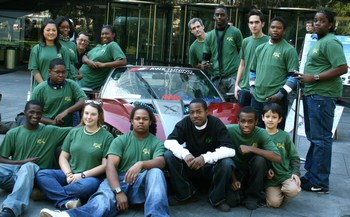
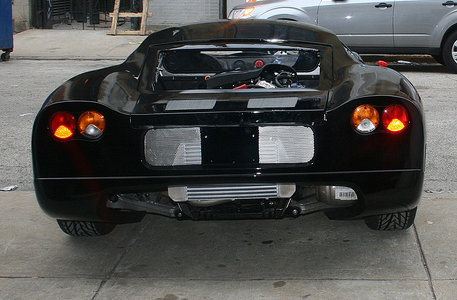
Fantastic. I’m proud just to see it because we can’t wait for “they” to do this “someday”. We have to just do it NOW. OURSELVES.
Check out this idea: http://ning.it/8YMC6V
these cars really run on no gas why is it not a big thing
The fact that these kids are building plug-in hybrid sports cars that can go 60+ miles on batteries, accelerate 0-60 in 4 sec.’s, and can get 50+ mpg after that is a big deal and it is a starter that, anyone interested in the X-Prize knows about them and at least the EPA is aware of them! -ed
I LOVE this car!!!!! How much did it cost to build? Great job that the kids did!!!!! Good luck in the future. Just shows what we all can do if we set our minds to it and have a little encouragement.
Great stuff, guys!
I like that car…
ahhhhhhhhhhhh i want it !
Can I get more info. about the parts they used to build this car, where they got the parts from, and how much it cost them. Thanx.
You can use Google to find dealers of “Attack” car kits. -editor
Very cool idea and beautiful design. It is clear why such a production is
not so interesting for the Oil. Shows what creative minds can build.
That car is awsome and i wish i had one!!
A very good job, those kids lead the way.
Good luck.
Thank God for you!